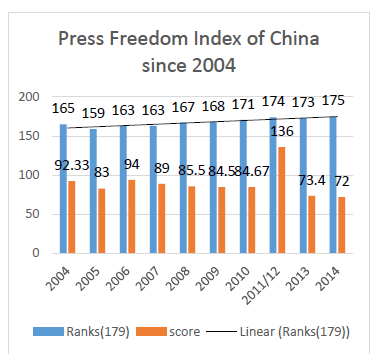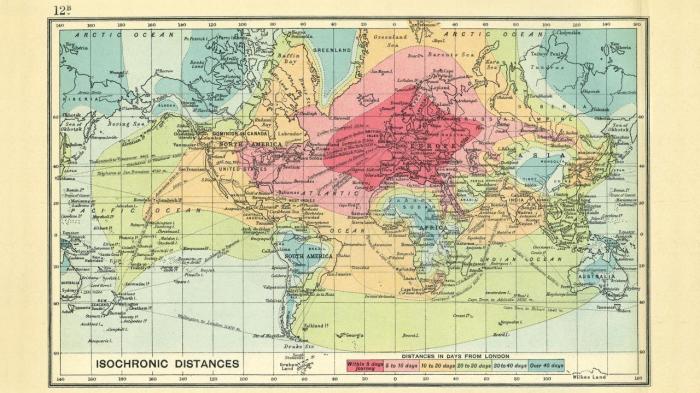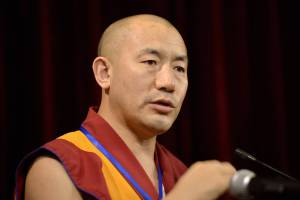By Tibetan Shepherd
Screening the media and its governance in China has been viewed as “political tool” and nationalization of Chinese media have been under carefully state management departments (D. Rawnsley, 2006). However, the perception of international audience in regard of Chinese media might have different concept. The discourse of briefing the concept of media freedom constitutionally viewed from freedom of speech in China – rhetorically underscoring issues in Tibetan region is an eyeball for many studies. This study enables to weigh the ethical standard of Chinese media and freedom of speech as whole.
Overview of Chinese Media
Surging through sequences of Chinese Media development, it heavily depended on eras of Chinese Communist party’s reigns. China in mid 1980s was in outburst of its outnumbered population and poverty, especially when the paste of economy was stagnant and Chinese oversea countries like Singapore and Taiwan emerged into the surge of rapid economic development. The model adopted by those countries enforced China to open its economy to the western world and stimulated corporate sectors especially state enterprises of China to march in the inclusive model. The primarily function of media in china is to “promote Chinese Communist Party’s agenda- maintaining the social stability and consolidating its power hold” (Shirk, 2010). In the model of Commercialization of Chinese Media, there has been steep forward growth mainly because of fair and balance commercial news that are favored by capitalist idealists in China. On other hand, professionalism in the state of art, which are often subjected as act against the state authority and face harsh sentences and subjugating under patriotic re-education programs – thus CCP never shows leniency to any public discourse which may lead to anti-governmental symbols.
In the preposition of Chinese media and regulation, most the media are state owned publication otherwise illegally or commercialized outlets (non-political publication 100 per cent commercial releases). There are several important factors which influence in imparting Chinese media ethical standard, values and question of self-regulations.
Regulators and structural framework of freedom of speech: Media
Central propaganda Department centrally administered and engineered by the front runners of Chinese Communist Party. China in post-Communist streaked and strove to promote its political publicity by means of brainstorming and ideological conversion of mass. (Lee, 2008) China during all the predecessors masterly imposed/indoctrinated Chinese Communist Party’s ideologies through a special mechanism i.e. propaganda programs in mainstream media praising party legacies and rejuvenation of Chinese spirits – to be loyal to the government. In the leverage of Propaganda Department, it has influence over every:
“newspaper offices, radio stations, television stations, publishing houses, magazines, and other news and media departments; universities, middle schools, primary schools, and other vocational education, specialized education, cadre training, and other educational organs; musical troupes, theatrical troupes, film production studios, film theaters, drama theaters, clubs, and other cultural organs, literature and art troupes, and cultural amusement parks; cultural palaces, libraries, remembrance halls, exhibition halls, museums, and other cultural facilities and commemoration exhibition facilities”.8 (Shambaugh, 2007)
In the grip of regulations, China has several actors responsible for gathering, disseminating, filtering and execution of information in main domains. There are several organs of functioning the propaganda in day to day life. For instance, the Council of Information Office monitoring the content of the newspapers, Minister of Education strictly conduct and developing educational textbook content mainly pouring the party’s ideologies and Chinese version of historical facts, Ministry of Culture in similar way, monitors arts, literature and theatrical works. In the frame of Chinese propaganda and empowerment of information in the digital age. Activisms in Cyberspace and Chinese citizens grew out of the controls. Ministry of Information Industry (MII) and State Council Ministry of Culture, Film Council and the Department of Radio and Television controls the whole cyberspace. The term internet no longer exists in China, rather the cyberspace in the region of China has been separated by harsh policy called the Great Firewall. The regulation framed by MII is to block international Internet Protocols and to build their own Intranet. (Neumann, 2001)
Despite draconian policies of Chinese Communist Party in self-censoring the media in China, the growth of social media and its grass root activisms in China challenges the harsh circumvented policies. (Shirk, 2010) There were instances of reshaping the professionalism and ethical standard in China’s social media enforcing the state media to take up the issues. Case of young migrant in China, called Sun Zhigang, was a symbolic. When Sun was travelling from his city to Chinese City, Guangdong, he was not able to provide document to prove his eligibility to travel and forced him under Detention and Repatriation System and found dead in later. Media across the nation started publishing about the mysterious and unexplained dead of young migrant. This episode ran through commercial media for long run and forced to abolish Detention and Repatriation. Media in China adopted two different kind of professionalism (1) new way to challenge the authority by using professional techniques to publish articles outside CCP agenda and (2) direct challenge by confronting with the government though the media professionals faces direct threat and serious consequences such as long time imprisonment and closure of media organizations such as Freezing Point media. (Shirk, 2010)
To posit Chinese Media professional code of Conducts, ethical standard and driving values with western conducts such as those adopted by World Congress of the International Federation of Journalists, adopting/adapting the moral principles of Chinese media conducts are still in transitional period of development. Political constitutional rights to speech/expression is the foundation of media in China – where media in China drives its values from commercial competition and stick arbitrary rule by Chinese Communist Party. In legal connotation, Chinese media are termed as “news workers” of CCP (Shirk, 2010).
Chinese communist party and its organs of regulators imposed various restrictions on media to avoid quotations from foreign media since New York Times exposed Chinese former premier’s Wen Jaibo wealth. Xenophobia is one case that China never allows international media in China in both virtual and by wire. Recent crackdown foreign media such as Gmail and Bloomberg and other social media like Facebook and Twitter marks stringent step and sees no legal reformation in the terms of media rights in China.
Press Freedom Index of China since 2004
Press Freedom Index (PFI) is published by Freedom House in France and been an independent group of Journalists working across 150 countries. PFI indicates scored countries in the terms of quantified band/ranks in terms of Press Freedom. There are several parameters which actually describes about the arbitrary state of Chinese government. For instance Media Pluralism which represents the degree of media representative opinions, Media Independence measures the degree of media functionality independence under an authority, Environment and self-censorship gives overview of environmental factors where journalist are working, legislatives of frameworks of media and its effectiveness, Transparency screens freedom of press production without fear and censorship and the infrastructure under which the professionals work. The indication of 0 being the best press freedom and 100 and nearly shows the least degree of Press Freedom (Freedom House, 2013).

Sources:Press Freedom Index publication
China’s PFI in last ten years indicated that press freedom in china is grave concerns. Topping its ranks in among 179 countries at the bottom and this figure can conceptualize rough image of freedom of speech, particularly press freedom in China.
Interpretation of Self-immolation inside Tibet by Chinese Media
In the prism of China’s policy to curtain the press freedom in China under tight control under Chinese Communist Party’s grip. It is impossible to function any kind of media independently, if so, will shut down immediately and press under stringent actions against whoever doing so. The plight of Tibetans in Tibet can be virtually understood from the spat of self-immolations in Tibet and abroad. Research on self-immolation in the University of Aberdeen underscored the wills of those Tibetans and witnessed that “the combined march towards economic development and political consolidation in the Middle Kingdom leaves little room or security for the ordinary citizen will surprise few China watchers of course. However, that it might lead to the kind of final rejection of both personal aspiration and governmental order witnessed in political self-immolation is a troubling lesson for the entire international community – which is, in effect, all of us – that supports China’s prodigious growth” (Mills, 2012) .

Sources :ALJA ZEERA
Insight into shocking case of Tibetans chose to burn themselves into the fire in different time period marks the seriousness of Tibetan condition in Tibet. The first Tibetan who chose to adopt such horrific method was Thupten Ngodup in 1998, dousing him into the gasoline to dead and marked his resistance as a heroic sacrifice for Tibetan people. In 2011, 15 Tibetans self-immolated and shockingly, 87 Tibetans chose to set themselves into the fires. According to ALJA ZEERA , 143 such cases happened since 1998, in which 30 in 2013 and 11 in 2014. However, there are variances in terms of numbers of cases of self-immolation across the world.
Interpretation that is made in China on Tibetan self-immolation would have different connotation and censors the realities embodies in Tibet. Although the case of Tibetan self-immolation has not widely covered by general media in China or Tibet, I was curious to see how Chinese media cover on Self-immolation in Tibet. Media in China has substantial freedom to cover environmental issues. The case of Tibetan specially self-immolation is a sensitive issue and carefully covered in major state owned media in China. In the notion of Western Media has difference from Chinese media.
There is limitation in terms of language while the reference I have used is based on English Newspapers available in internet in China. To seeking information in China’s media discussing the norms, values and standard of the press, I have already laid the foundation Media in China in Chapter one. The concept of Chinese government scorn censorship mechanism.
Search of words “Tibetan Self-immolation” on Sino Media, Beijing Today and Xinhau News on following areas.
The concept of Media Pluralism and participatory media on “Tibetans’ last-resorted method of self-immolation” received a large coverage from both political institution and media at large and participatory media such as social media and citizen journalism across the world. However, the media mentioned: Shanghai Daily, Beijing Today and Xinhau News carried news about self-immolation which are to be suitable for Chinese Communist Party where the media should not spur incitement of public and avoid sensitive issues such as Tibetan and other minorities’ cases. Sino media posted Local monks not self-immolating resisting that no self-immolation took place in Tibet, where the news sources was injected by Pedma Choling, the Chairman of Standing Committee of Tibetan Autonomous Region. Xinhau News also carried almost the same headline denouncing the Dalai Lama as the “Plotter” In similar manner, the same media carried news about a Buddhist monk self-immolated in Nepal distorted the actual news disguising the Buddhist monk as non-Tibetan. Media outside the prism of China confirmed that the monk was a Tibetan whose motive was to protest against continuous occupation of Tibet by China. In searching of word “Tibetan self-immolation” in the web portal, it talks more about self-immolations from Japan, Israel and Syria and omitted almost all Tibetan cases.
When the internet space in China is gripped by walls of the “great firewall”, the latest regulation slaps the internet community of China by legitimizing great firewall and ensuring the political consolidation of Communist party of China. Article 3 in the regulation reaffirmed the basic principles of Self-regulation and Professional Ethics for Internet the Industry are being patriotic observance of law, equitableness, trustworthiness and honesty dictates the peoples’ loyalty to the law. The obligation is enforced to internet provider to pledge to inspect and monitor foreign website and disallow if it disseminates harmful information.
The case of citizen journalism in China has been under severe grip of constant watch. For Tibetan case, Tibetan Chinese blogger openly shared her views on why Tibetans are self-immolated and often put under house arrest and many other Tibetans bloggers, writers and singers expressing their views on Tibetans livelihood in Tibet, often face imprisonment and subjugated them as the separatists plotted by exile leader the Dalai Lama. Despite self-immolation in Tibet is an act of Political rejection of Chinese government continuous repression in Tibet, media organs carefully follow the state regulation and fabricate the news, for instance, Xinhau News made story of Tibetan immolator Tenzin Sherab in Yushu due to rejection from his girlfriend whose actual will reads as the same as other Tibetan self-immolators carried. There are many instance of Tibetans being forged under state separatisms activisms, for instance, Wechat application is said to be one of the most popular smartphone application for communication, a Tibetan woman called Kalsang in Tibet was arrested in spreading hatred messages including storing banned songs praising Tibetan leader the Dalai Lama and his portraits. China monitored information through her phone where application Wechat was installed and being used.
Conclusion
In terms of Media independence and pluralistic in China, environmental journalism has found a space of leniency provided without underestimating the state-centered and market-centered explanation (Yang, 2005) especially when the stride of economic uplift in China left China’s policy makers no choice otherwise to give pluralistic concept to Chinese NGOs and media to focus on environment damages.
Whilst the foundation of Political system in China also shapes the journalistic empowerment, transparency from self-censorship and legitimacy of Chinese media. Chinese policy makers often configures western model of development based on fundamental democracy as non-suitable to Chinese context and rule of law, during the annual plenum, with Chinese socialist Character would carter better views China. When the freedom of speech in China is claimed as “Chinese Characteristic”, it is still under the control of Communist Party. For short run media in China would not see positive reflection in terms of legal reformation, at least before 2020. Journalists will remains as the news worker of Chinese Communist Party obligated with firm belief to the party’s drive.
Therefore, the state of media in China is in transitional period adopting new concept of pluralism and ethical values – with direct confronting to the indoctrinated ideologist Party or grooming through new ideated forms. In other words, media professionals give societal issues without shedding much highlighted to challenge political views against the state government. Softer issues such corruption driven by present leaders, environmental and traditional values of China gains highly reputed values in media in China
Ethical standard and values in Chinese media drives from very strident rule by law – where media (every form) are connoted as Chinese Communist Party’s “News Workers” and awakening the ideological frame work of Moas. Referring to one the present Chinese President Xi Jinping propagandas on regaining “correct views of art” among Chinese Artist, Films directors and TV producers in the country side especially to minorities and border areas. Here “Correct view of Art” according to pioneering media like The Guardian resonated as Moa style of Propaganda.
Therefore, for the case of Tibetan and other minorities, freedom of speech is within the limitation of CCP preamble – loyalist and anti-Dalai Lama.
download in PDF Version
References
- Rawnsley, D. (2006). The media, internet and governance in China . China Policy Institute, 18.
Freedom House. (2013). 2013 Press Freedom Index – Methodology. Freedom Hourse.
Lee, K. S. (2008). Political Regimes and media in Asia. Oxon: Routledge.
Mills, M. A. (2012). Going down in flames: Self-immolation in China,. The South Asianist, 21.
Neumann, A. L. (2001). The Great Firewall. Janeiro de .
Shambaugh, D. (2007). CHINA’S PROPAGANDA SYSTEM: INSTITUTIONS, PROCESSES AND EFFICACY . The China Journal, 4.
Shirk, S. L. (2010). Changing Media, Changing China. New York: Oxford University Press.
Yang, G. (2005). Environmental NGOs and Institutional Dynamics in China. SOAS University of London, 22.






